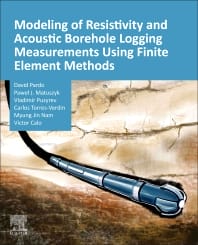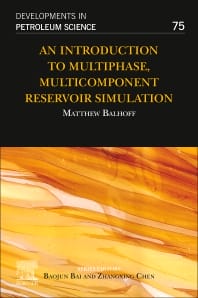New on the Bookshelf: Balhoff, Torres-Verdin and Espinoza
May 25, 2022
If you’re looking to add some of the latest petroleum engineering resources to your bookshelf or digital library, look no further than these three recent works from Hildebrand Department faculty members.
An Introduction to Multiphase, Multicomponent Reservoir Simulation
By Professor Matt Balhoff
Summary: Presents basic equations and discretization for multiphase, multicomponent transport in subsurface media; includes explanatory illustrations and dozens of completed example problems; and offers pseudocode and exercises so readers can develop their own computer-based numerical simulators that can be verified against analytical solutions and commercial simulators
Audience: Graduate students and professionals working in reservoir simulation, upper-level undergraduate students in their first simulation course, and geologists working in the oil and gas industry
Publisher/Release: Elsevier, September 2022
Modeling of Resistivity and Acoustic Borehole Logging Measurements Using Finite Element Methods
By Professor Carlos Torres-Verdín, David Pardo, Pawel Matuszyk, Vladimir Puzyrev, Myung Nam and Victor Calo

Summary: Provides a complete and unified finite element approach to perform borehole sonic and electromagnetic simulations; includes the latest research in mathematical and implementation content on Finite Element simulations of borehole logging measurements; and features a variety of unique simulations and numerical examples for simulating borehole resistivity measurements
Audience: Students and professors in applied mathematics, numerical analysis or petroleum engineering interested on simulating and/or inverting borehole resistivity measurements, and professionals working in oil and gas or related sectors (e.g., deep geothermal energy extraction)
Publisher/Release: Elsevier, May 2021
Introduction to Energy Geomechanics
By Associate Professor Nicolas Espinoza
Summary: Includes chapters on geomechanics for the energy industry, subsurface stresses and pore pressure, solid continuum mechanics, rock yield and failure, stresses on faults and fractures, wellbore stability, hydraulic fracturing, and reservoir depletion and injection. Figures, example problems with solutions and additional reading recommendations also included in each chapter.
Audience: Undergraduates enrolled in engineering and geoscience programs related to energy resources and waste management including oil and gas, geothermal, and carbon storage, and professionals who want to learn about the fundamentals of geomechanics
Publisher/Release: Available online, last updated February 2021

If you’re looking to add some of the latest petroleum engineering resources to your bookshelf or digital library, look no further than these three recent works from Hildebrand Department faculty members.
An Introduction to Multiphase, Multicomponent Reservoir Simulation
By Professor Matt Balhoff
Summary: Presents basic equations and discretization for multiphase, multicomponent transport in subsurface media; includes explanatory illustrations and dozens of completed example problems; and offers pseudocode and exercises so readers can develop their own computer-based numerical simulators that can be verified against analytical solutions and commercial simulators
Audience: Graduate students and professionals working in reservoir simulation, upper-level undergraduate students in their first simulation course, and geologists working in the oil and gas industry
Publisher/Release: Elsevier, September 2022
Modeling of Resistivity and Acoustic Borehole Logging Measurements Using Finite Element Methods
By Professor Carlos Torres-Verdín, David Pardo, Pawel Matuszyk, Vladimir Puzyrev, Myung Nam and Victor Calo

Summary: Provides a complete and unified finite element approach to perform borehole sonic and electromagnetic simulations; includes the latest research in mathematical and implementation content on Finite Element simulations of borehole logging measurements; and features a variety of unique simulations and numerical examples for simulating borehole resistivity measurements
Audience: Students and professors in applied mathematics, numerical analysis or petroleum engineering interested on simulating and/or inverting borehole resistivity measurements, and professionals working in oil and gas or related sectors (e.g., deep geothermal energy extraction)
Publisher/Release: Elsevier, May 2021
Introduction to Energy Geomechanics
By Associate Professor Nicolas Espinoza
Summary: Includes chapters on geomechanics for the energy industry, subsurface stresses and pore pressure, solid continuum mechanics, rock yield and failure, stresses on faults and fractures, wellbore stability, hydraulic fracturing, and reservoir depletion and injection. Figures, example problems with solutions and additional reading recommendations also included in each chapter.
Audience: Undergraduates enrolled in engineering and geoscience programs related to energy resources and waste management including oil and gas, geothermal, and carbon storage, and professionals who want to learn about the fundamentals of geomechanics
Publisher/Release: Available online, last updated February 2021